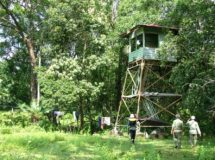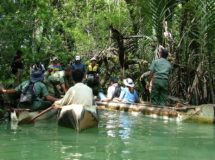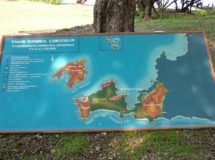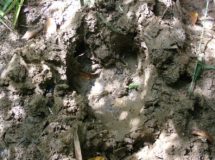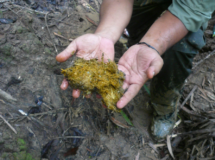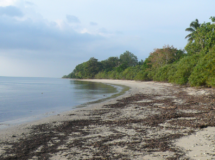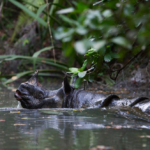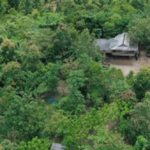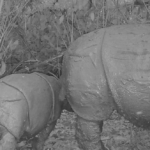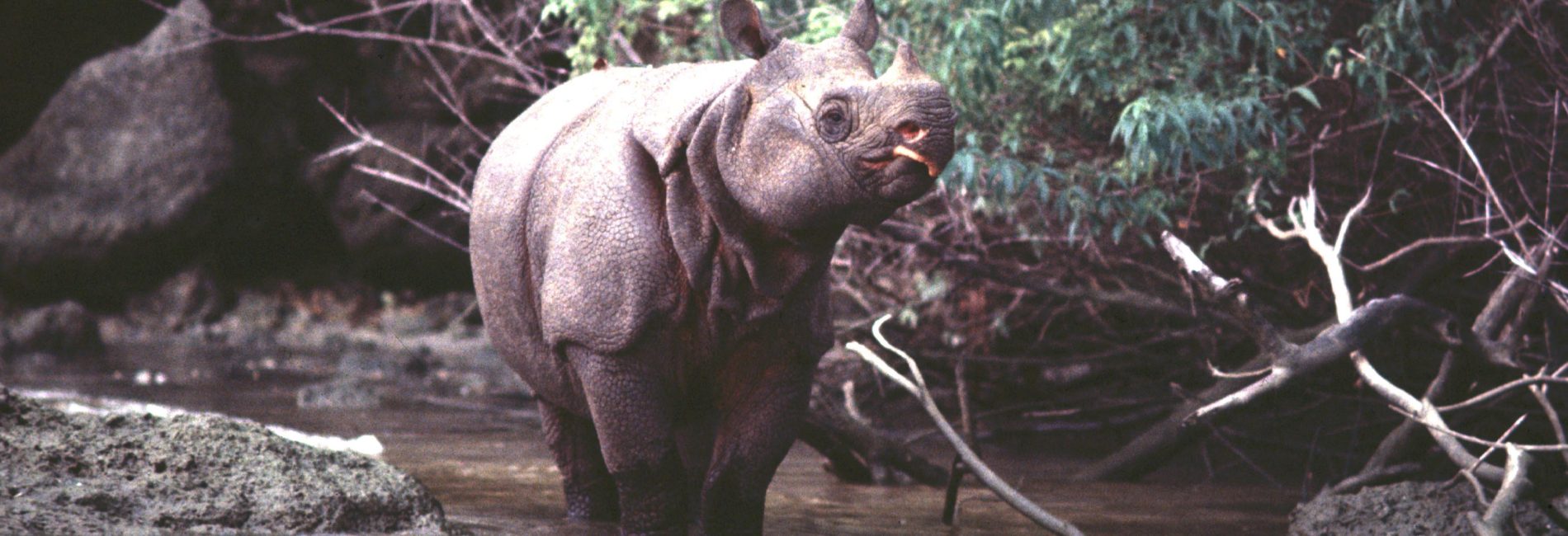
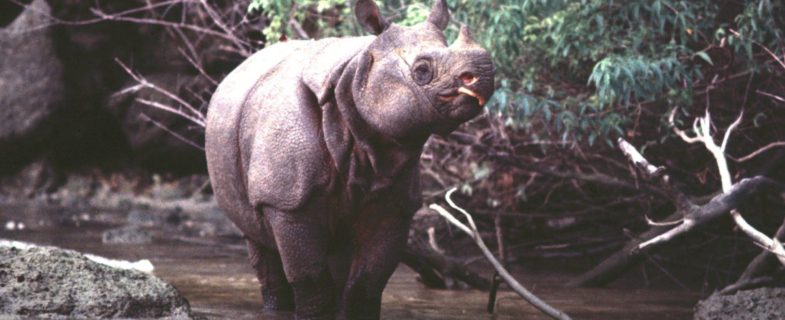
Indonesia: Ujung Kulon National Park
Whilst the last Javan tigers disappeared from Java by the 1970s, Javan rhinos were able to cling on in the forests of a peninsula to the west, an area set aside for their protection known as Ujung Kulon National Park (UKNP). Following the species’ extinction in Vietnam by 2010, and with none living in captivity, these individuals are now the last known Javan rhinos, with official government reports from 2022 stating that there were 76 individuals left in the wild.
However, since 2023, news has come to light of rhino poaching syndicates admitting to having illegally killed up to 26 rhinos in the Park. The Government and police continue to investigate this, but the actual number of living rhinos is currently unknown.
The problem
Javan rhinos adore water and, historically, they ambled along the beaches looking to supplement their salt intake. In recent years, more and more fishermen – some constructing platforms – have attempted to fish illegally off the coast of UKNP. Being highly sensitive to human activities, fewer and fewer rhinos were habituating the coast as a result of this disturbance, meaning that these gentle giants were having to travel deeper into the forest in search of other sources of salt. Furthermore, if rhinos were sighted on the beaches, there are concerns that opportunistic attempts may be made to poach a rhino while it is out in the open.
Unfortunately, protection from humans alone is not enough to save the species from extinction. Invasive Arenga palm trees shadow the rhinos’ preferred food plants, whilst livestock diseases such as trypanosomiasis, haemorrhagic septicaemia and, potentially, anthrax have likely been responsible for the deaths of several rhinos during multiple outbreaks since the 1980s.
Lying adjacent to the Indonesian Sunda Arc, where converging tectonic plates often generate earthquakes, the Javan rhino’s only habitat is susceptible to the impacts of natural disasters such as tsunamis. The Park lies close to Anak Krakatau, a large volcano that most recently erupted on 22 December 2018. Part of the volcano’s southwestern side broke off and fell into the sea, causing a large tsunami. No rhinos were reported to have been harmed in this incident; however, next time they may not be so lucky.
Most recently, poaching has been the primary threat to Javan rhino’s safety. In 2023, authorities uncovered evidence that up to 26 Javan rhinos were illegally killed since 2019. Following the discovery of the poaching incidents, a coordinated response was initiated by the Indonesian Government, law enforcement agencies and conservation NGOs to implement urgent rhino protection measures. Simultaneously, investigations into the criminal groups responsible took place, successfully convicting a number of individuals responsible.
How are these problems being tackled?
With the species’ single population vulnerable to so many threats, it is essential that this existing population is protected and able to grow. The ultimate aim is that a second viable population is established elsewhere within its historic range, in the event that the UKNP population were wiped out. The key towards accomplishing this goal is to create conditions that will allow the existing population to expand.
Since the detection of poaching in the Park, security efforts have been significantly bolstered. Thankfully, no further incidents have been reported since 2023.
The rhinos are also intensively monitored using remote camera traps to estimate the population’s size, identify which rhinos are using the habitat, what sex they are, and how they are using it. Camera traps are a more effective means with which to identify individual rhinos than by analysing footprints, as the images capture unique characteristics such as wrinkles, scars, horn size and shape, and neck folds, enabling the Park’s staff to distinguish between rhinos.
Currently, the population of Javan rhinos continues to breed well in UKNP, with at least one new calf recorded every year since 2012. However, successful breeding in a single, remnant population without establishing a second site – and eventually more – can only achieve so much.
Saving Critically Endangered Javan rhinos from the brink of extinction.
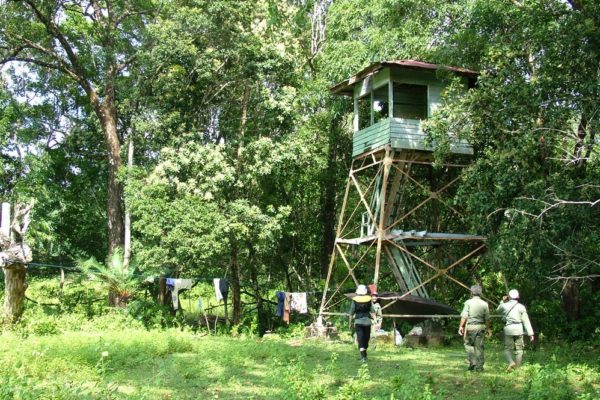
Rhino Protection Unit Observation Tower, Ujung Kulon National Park.
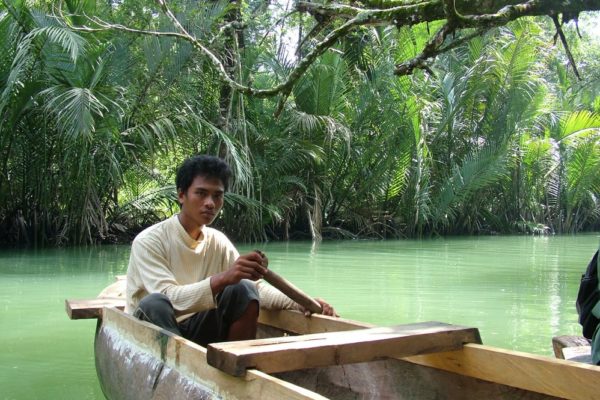
Rhino Protection Unit ranger canoeing across the thick forest.

Ujung Kulon National Park.
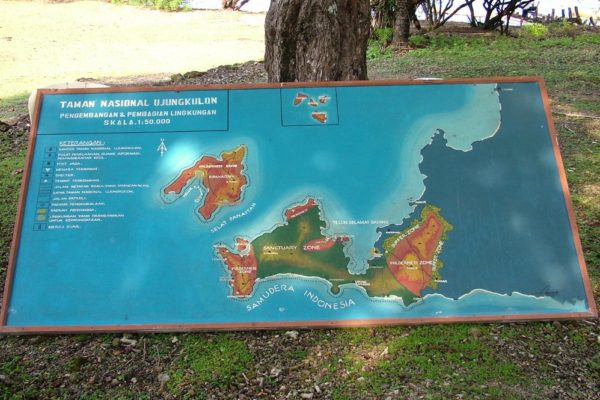
Map of Ujung Kulon National Park in Indonesia.
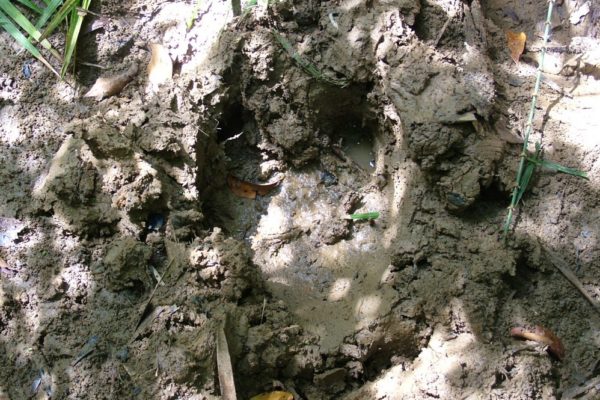
Very few people have seen Javan rhinos in the wild. Rangers are experts at tracking their footprints.
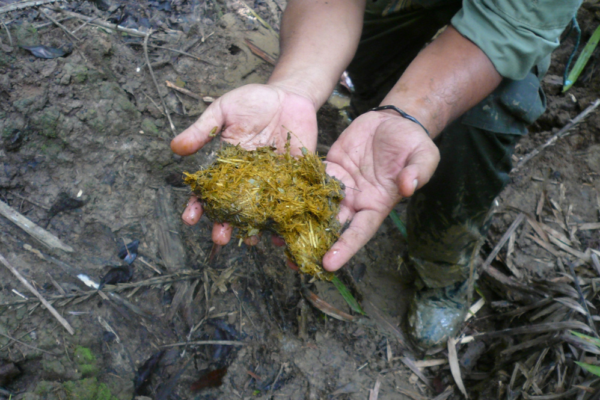
Ranger showing rhino dung as one of the signs looked for during patrol.
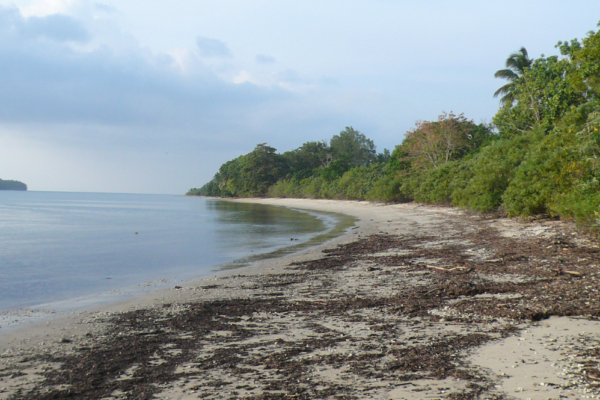
Javan rhinos live close to the shoreline of Ujung Kulon National Park.
Our work
We are supporting the teams monitoring the Park and its rhino population. As the plans for UKNP move forward, we will be supporting research, including looking for a suitable second site for rhino reintroductions, and research into the age, fertility, and social structures of the existing Javan rhino population.
 Protecting Rhinos
Protecting Rhinos
 Reducing Illegal Horn Trade
Reducing Illegal Horn Trade
 Involving Communities
Involving Communities
 Bringing Experts Together
Bringing Experts Together


